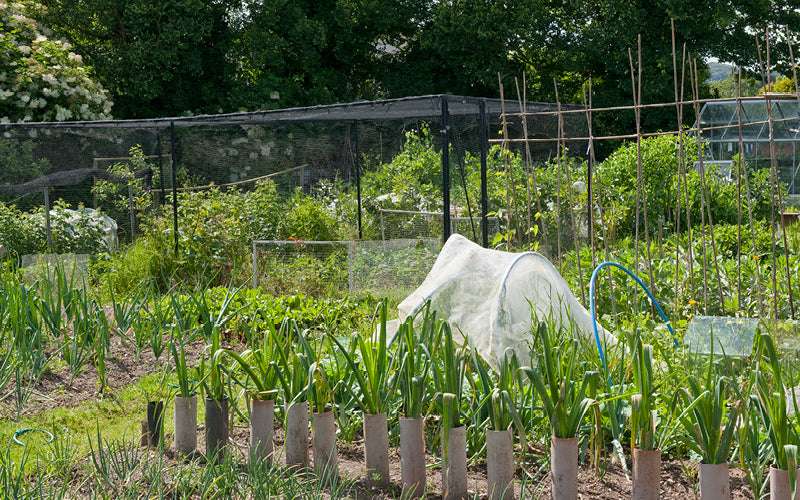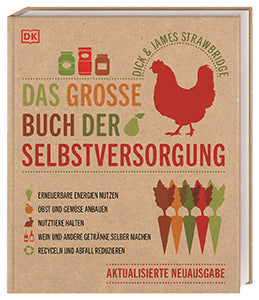The allotment garden – tips and useful information
If you have a small plot of land, are considering an allotment garden for growing fruit and vegetables, or are already the proud owner of one, you've come to the right place. Read these valuable tips and all sorts of interesting facts about gardening in an allotment garden!

The allotment garden
Being close to other gardeners has the advantage of sharing seeds, surplus harvests, and good tips. Allotment gardening allows you to grow on a larger scale, so you can harvest and preserve enough to have a delicious supply for the entire year.
Stay realistic
Allotments are very popular; in some cities, there are even long waiting lists. Anyone who takes over an allotment means other families have to wait a while longer. If you don't use your garden for vegetables, it's best to start there first and carefully consider whether you even have enough time for an allotment.
If your allotment is neglected, you may be advised to abandon it. While the commitment to maintaining the garden ensures good yields, it can also create pressure. If you're unsure, share the allotment with friends or neighbors.
The rules of the game
Read the allotment garden regulations carefully—they can vary from country to country. Some allow the keeping of small animals or bees. There are often restrictions on planting trees, erecting structures, and digging ponds.
First steps
You're usually assigned a garden, and you rarely have a choice. Examine it carefully, paying attention to the direction, slope, and soil type, as well as which areas receive a lot of sun or shade. If in doubt, simply decline.
Before planting, provide the soil with plenty of rotted manure and fertilizer.
If the soil is heavy and clayey, you should also add coarse sand, mushroom substrate or wood ash.
Then consider which plants are best suited to your garden. Herbs and lettuce are better suited to a garden by the house, on the balcony, or on the windowsill, because you need them almost every day. In your allotment, plant species that don't require as much attention.
You can also grow seedlings indoors and then plant them in your allotment.
Perennial species
The great thing about perennial plants is that they require little care—ideal for those with limited time. They're also quite hardy. You can choose from fruits like strawberries, raspberries, and gooseberries, various vegetables like perennial rocket and spinach, artichokes and Jerusalem artichokes, and, of course, rhubarb.
Comfrey is not edible, but deserves a place as a fertilizer source.
If planting tall trees is prohibited, dwarf forms may be possible. Alternatively, many fruit tree species can be trained on espaliers.
Water supply
Many allotment gardens have water taps, but the walk to them can be long. To conserve water, plant plants less closely together. This gives the roots more space to search for moisture.
Mulch between the rows reduces evaporation and keeps the soil moist. If you have a shed, be sure to install a gutter and a rain barrel.
Sheds and garden houses
A shed or garden house is practical because you can leave tools on site. However, you should install a solid lock. If you have a garden at home, you'll need some tools twice.
We recommend building a cold frame to protect young plants and a composter with several chambers to process green waste.

Which vegetables
For newbies we recommend these types:
Garlicthrives easily and can be stored for months.
leekis a good winter vegetable.
Beetrootare also productive. The young leaves are delicious in salads.
pumpkinCan be stored until winter, but takes up a lot of space.
Colorful chardgrows quickly and has gorgeous colors.
radishgrow quickly – simply sow between slower species.
broad beansSow in early spring and fall for a long harvest. Watch for pests and diseases.
Runner beansTake advantage of the height. Sow at the north end of the garden so they don't take away the light from other species.
Zucchini and summer squashProduce high yields with little work – even without watering
potatoesare a sure-fire success in allotment gardens. If you want a large harvest, you should plant them in beds and also in tire towers, barrels, or old substrate bags.
TIME-SAVING TIPS!
Uncultivated areasMulch generously to suppress weeds until you have time to work. Plastic film can also suppress weed growth.
Transparent filmPlace it on the freshly dug area and weigh down the edges with stones. When the soil has warmed to about 26°C, plant seedlings that have been raised indoors. To do this, make a cross-shaped cut in the film for each plant. Water thoroughly after planting. Weeds that germinate under the film cannot tolerate the intense heat and will die.
Without wateringFor example, zucchini and summer squash thrive surprisingly well. Very practical!

The content of this article is from the book:
Dick Strawbridge, James Strawbridge
The Big Book of Self-Sufficiency-Use renewable energy. Grow fruit and vegetables. Raise livestock. Make your own wine and other beverages. Recycle and reduce waste.
Price 26.95 €
ISBN 978-3-8310-4100-8
DK Publishing Dorling Kindersley
The Big Book of Self-Sufficiency shows how everyone can live an environmentally conscious, more sustainable life and reduce their carbon footprint. This definitive reference on self-sufficiency has already sold over 70,000 copies!

























































































